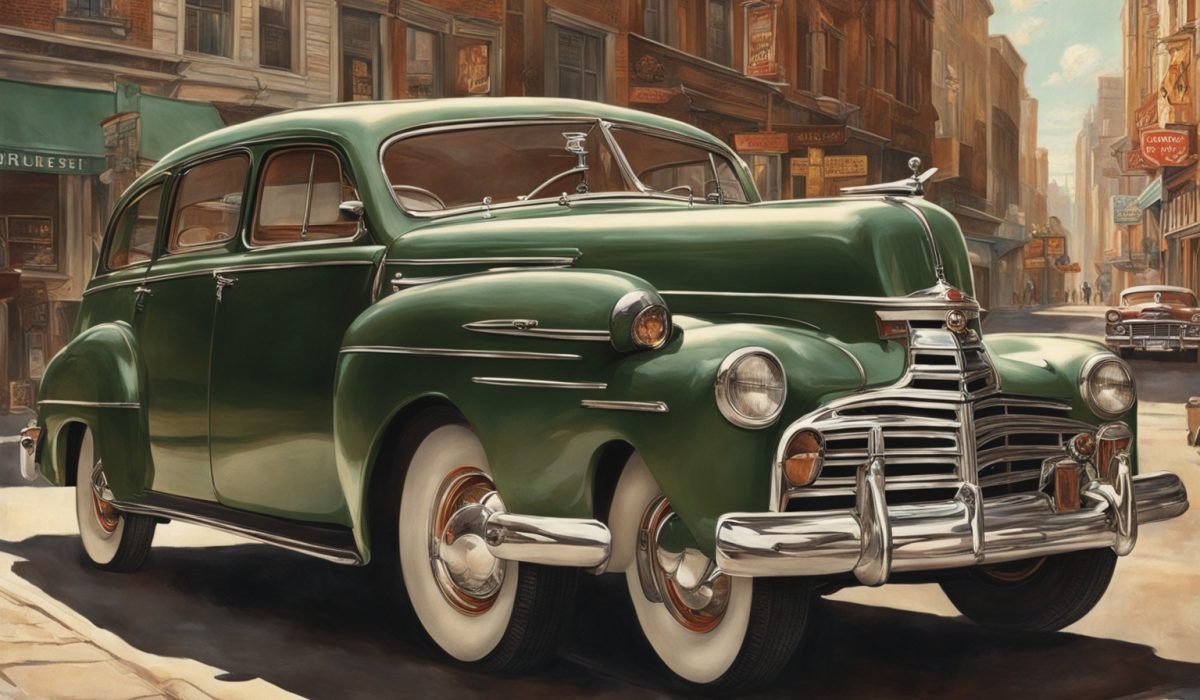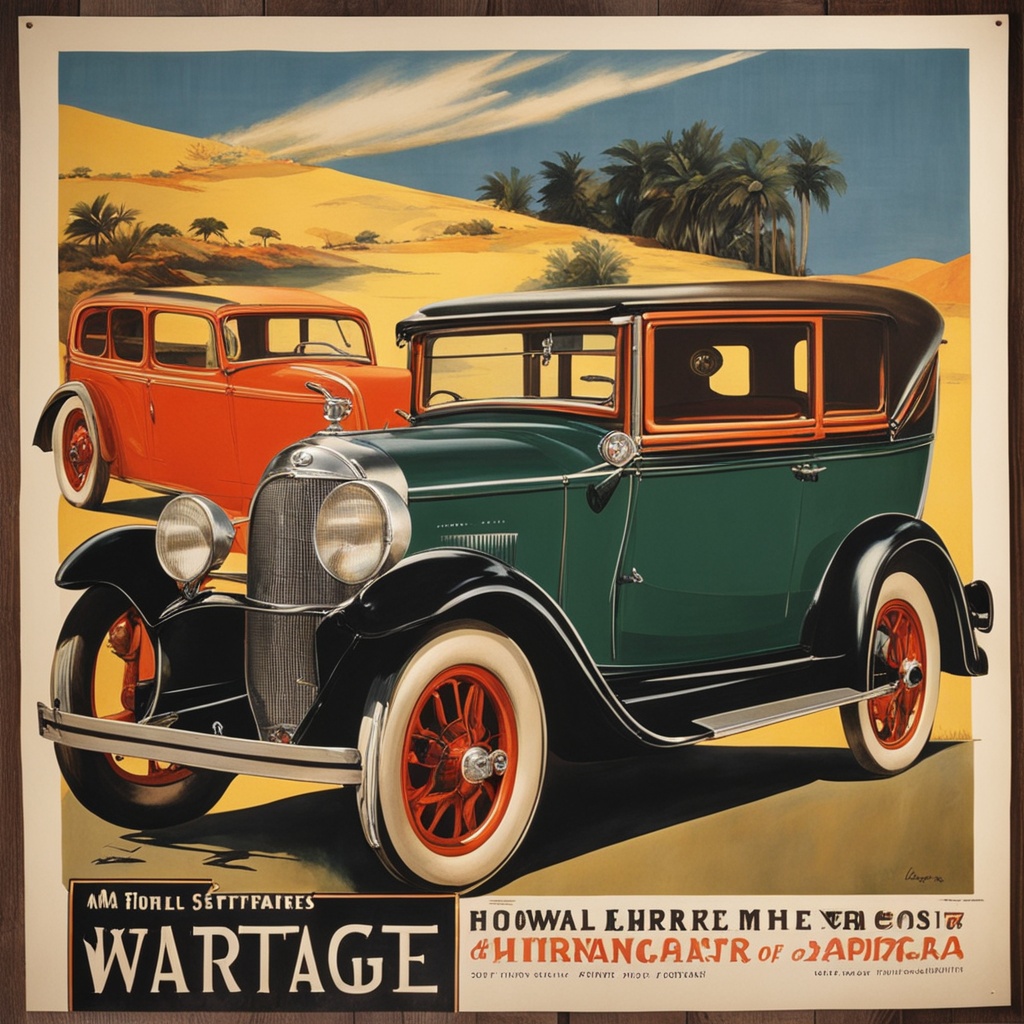Exploring the Timeless Appeal of Vintage Art Posters

Vintage art posters offer a nostalgic and compelling glimpse into the cultural, historical, and aesthetic movements of past eras. Each poster holds its own story, capturing the essence of the time period in which it was created. Alongside their historical significance, the appeal of these posters is also determined by the authenticity and condition, which affect their value considerably. As collectors and admirers delve into this world, understanding the intricate details like themes depicted and the influence of renowned artists becomes essential. Furthermore, enthusiasts invest in meticulous preservation techniques to maintain these treasures, often seeking expert advise on how to integrate them into contemporary settings, thereby ensuring they continue to enhance modern decors while preserving their vintage charm. Whether you’re a seasoned collector or new to the field, discovering where to find and how to properly care for vintage art posters can be both a pursuit of passion and a rewarding investment.
CONTENT
Introduction to Vintage Art Posters
Defining Vintage Art Posters
Vintage art posters, spanning from the late 19th century to the mid-20th century, encapsulate a unique blend of artistry and commercial appeal. These pieces were originally manufactured for advertising purposes, promoting everything from films and concerts to travel destinations and products. Today, they are valued not just for their original promotional intent but also for their artistic qualities, thereby straddling the realms of both art and historical artefact. Collectors and enthusiasts appreciate these posters for their vibrant graphics, stylised typography, and the aura of an era they represent.
The Evolution of Poster Art
The journey of poster art through the ages is marked by significant evolution, influenced by major artistic movements such as Art Nouveau, Art Deco, and Modernism. Initially utilised for advertising, the function of posters expanded during the 20th century to include political and social messages, particularly during wartimes. This period witnessed a transformation in design techniques and printing technology, notably lithography, which allowed for richer, more dynamic colours and textures in poster production. This technological advancement propelled posters from mere commercial tools to celebrated forms of public art.
Collecting Vintage Posters
The activity of collecting vintage posters is driven by a blend of aesthetic appreciation and historical interest. Each collector may focus on different genres depending on personal taste—be it cinematic, travel, music, or political posters. Novices to this hobby should start by researching and understanding the era, artist, and the context of the posters they are drawn to. Authentication plays a critical role in collecting, as the market does include reproductions. Engaging with established dealers and attending auctions can be a practical start for aspiring collectors to acquire authentic and valuable pieces.

Historical Significance of Vintage Art Posters
Vintage art posters possess a unique position within the world of historical artefacts, reflecting the societal, political and economic landscapes of their times. Originally conceived as utilitarian objects designed to advertise products, events or services, these posters inadvertently captured the spirit of the eras they were produced in. During periods of significant historical events, such as wars or economic depressions, posters served as powerful tools for propaganda and morale boosting, conveying messages of hope, duty, or national pride. This dual function as both advertisement and social commentary elevates their status from mere promotional materials to important historical documents.
The influence of global artistic movements on poster art is profound, providing a visual chronicle of the evolution of graphic design and artistic styles. For instance, the bold simplicity and geometric forms of Art Deco and the intricate, flowing lines of Art Nouveau can be traced through the advertising posters of the early 20th century. These artistic styles were not simply aesthetic choices; they were reflective of the broader cultural shifts towards modernisation and the exotic, respectively. By examining these posters, historians and art enthusiasts gain insights into the popular culture and aesthetic sensibilities of the times.
Moreover, the preservation and study of vintage art posters offer an accessible entry point into art collection and historical exploration for the public. Unlike more traditional and often more expensive art forms, posters are more readily available and often resonate with a wider audience due to their vibrant designs and relatable content. Museums and exhibitions around the world curate collections of these posters, emphasising their role not just in art history, but in the everyday lives of people across different periods. Through these collections, vintage art posters continue to engage, educate, and inspire generations, long after their original purpose has been served.
Identifying Genuine Vintage Art Posters
Understanding Paper and Printing Techniques
The authenticity of vintage art posters can significantly depend on the paper and printing techniques used during their production. Original vintage posters were often printed on specific types of paper that can show characteristic signs of ageing such as slight yellowing, foxing, or even particular textures. Modern reproductions, on the other hand, tend to use newer, brighter white paper. Additionally, the printing techniques such as stone lithography, which was popular during particular periods, leaves telltale signs like the texture of ink on the paper which can be felt by touching. Knowledge of these nuances can guide collectors in distinguishing genuine vintage posters from later reproductions.
Analyzing Artist Signatures and Markings
The presence of an artist’s signature or specific studio markings can be a clear indicator of authenticity for vintage art posters. Original posters may bear the signature of the artist, either printed or handwritten, along with specific dates or studio logos that were used during the time of production. It is crucial to familiarise oneself with the artist’s signature style and the history of their work to verify authenticity. Additionally, many authentic vintage posters include tax or proprietary stamps, which were commonly used in the past as a means of copyright control by studios.
Evaluating Wear and Provenance
Assessing the wear and provenance of a vintage poster plays an essential role in confirming its authenticity. Genuine vintage posters often exhibit a natural degree of wear that aligns with their age, including slight tears, fold marks or faded colours, which should be uniform across the poster. Furthermore, provenance, or the documented history of the poster’s ownership, can provide valuable insights. Reliable sources of provenance add credibility to a poster’s authenticity. Collectors should look for documented evidence or credible testimony that traces the item’s history back to its origin.
Popular Themes in Vintage Art Posters
Vintage art posters are often celebrated for their vibrant and diverse thematic elements that catered to various advertising and promotional needs. One of the most iconic themes revolves around travel and tourism, where posters spectacularly depicted far-flung destinations, luxurious trains, and majestic ocean liners. These posters were primarily aimed at enticing the burgeoning class of leisure travelers in the early to mid-20th century. The bold colors, exotic landscapes, and stylized fonts typically used in these posters not only informed viewers but also kindled the imagination, making them a popular collector’s item today for their nostalgic appeal and artistic value.
Cinema is another prevalent theme in the realm of vintage posters, with early film posters being particularly renown for their ability to capture the essence of the movie and its stars with strikingly dramatic designs. These posters played a crucial role in the entertainment industry, functioning as the primary method for promoting new films. The artwork often featured hand-painted portraits of leading actors alongside captivating scenes from the movies, which helped attract audiences to theatres. Collectors and enthusiasts often seek these posters for their artistic merit and as a connection to the golden age of cinema.
Lastly, the theme of consumer goods also dominated a large segment of vintage poster art, with advertisements ranging from beverages and food to luxury goods like perfumes and automobiles. The art deco period, in particular, saw a surge in such posters that were characterised by chic, sleek lines and elegant typography, reflecting the modernist ethos of the age. These posters not only served to sell products but also to redefine standards of beauty and style in their eras. Today, they stand as a testament to the evolving culture of consumerism and are highly valued for both their historical significance and aesthetic beauty.
Impact of Condition on Value
Grading the Condition
The value of vintage art posters is heavily influenced by their condition, which is typically categorised through a grading system ranging from poor to mint condition. Each grade reflects various common issues, such as tears, fading, foxing, or water damage that can occur with age. Mint condition posters, often rare and highly prized, are those that have virtually no imperfections and appear as they did when first printed. Collectors should familiarise themselves with the specifics of this grading system to accurately assess a poster’s value and ensure appropriate pricing or investment.
Restoration Impact
While restoration can enhance the visual appeal of a vintage art poster and prevent further degradation, it can also affect its market value, often negatively. Professional restoration work, especially if done conservatively and adeptly, might maintain or increase a poster’s worth. However, overzealous or poorly executed restorations may decrease its authenticity and desirability among collectors. When considering purchasing a restored poster, potential buyers should seek detailed information about the extent of the work done and the materials used to gauge the poster’s true value post-restoration.
Historical and Rarity Considerations
Beyond physical condition, the historical significance and rarity of a vintage poster can play crucial roles in determining its value. Posters that were printed in limited quantities or for special occasions, such as a landmark event or a short-lived advertising campaign, are typically more valuable. Similarly, posters from a significant historical period or featuring artwork by renowned artists can command higher prices, despite not being in perfect condition. Collectors often weigh these factors, considering a poster’s provenance and cultural impact alongside its physical state to estimate its overall worth.
The Role of Artists in Vintage Poster Art
The role of artists in vintage poster art transcends mere graphic design; these creators infused their work with a poignant artistic vision that often mirrored contemporary artistic trends and societal shifts. Pioneers like Henri de Toulouse-Lautrec and Jules Chéret are celebrated for revolutionising the world of advertising through their inventive use of colour and composition in poster art. Their work not only contributed to commercial advertising but also elevated poster art to a respected form within the fine arts community. This blending of commercial and artistic goals allowed for a unique expression that was both accessible to the general public and appealing to art connoisseurs.
Artists involved in the making of vintage posters often had backgrounds in fine arts or decorative arts, bringing a high level of skill and artistic sensibility to their commercial projects. Their ability to combine text and image in aesthetically pleasing yet informative ways was crucial during an era when posters served as one of the primary means of mass communication. This was particularly significant during the early 20th century when literacy rates were improving and more people were drawn to visual media. The artwork in these posters did more than just advertise products or services; it captured the zeitgeist of the era, making statements about style, culture, and technology that were understood and appreciated across diverse populations.
Moreover, the contribution of these artists helped to pave the way for modern advertising and graphic design. Many techniques and styles first popularised in vintage posters have continued to influence design practices and aesthetic standards in the contemporary digital age. The legacy of these artists is evident not only in the continued popularity of their original works but also in the enduring principles of design they established, which continue to inform and inspire current generations of artists and designers. This historical interconnectedness highlights the cultural and artistic significance of vintage poster art, anchoring it as a critical study in both art history and commercial art fields.
Preservation Techniques for Vintage Art Posters
Proper Framing and Mounting
To safeguard vintage art posters from environmental damage, proper framing and mounting are essential. It is advisable to use acid-free mats and backing materials to prevent the deterioration of the paper. UV-protective glass or acrylic can be employed to shield the poster from harmful ultraviolet light, which can cause fading and discolouration over time. Additionally, ensuring that the framing materials do not directly contact the surface of the poster can help maintain its integrity, preventing potential chemical interactions that might lead to staining or other forms of damage.
Climate Control for Storage
Maintaining an optimal climate is crucial for the preservation of vintage posters. These should be stored in a controlled environment where temperature and humidity levels are kept consistent. Ideally, the temperature should be maintained around 18-20°C, and relative humidity should be kept at 50-55% to prevent the paper from becoming too dry or moist, which can lead to cracking, curling, or mould growth. Avoiding storage in attics, basements, or other areas prone to fluctuations in environmental conditions is also beneficial for long-term preservation.
Handling and Cleaning Techniques
Handling vintage posters with care is essential to prevent any physical damage such as tears or creases. Always wash and dry hands thoroughly before touching a poster, or better yet, use cotton gloves to minimise the transfer of oils and dirt. When cleaning is necessary, it should be done with a soft, dry, and lint-free cloth to gently wipe off dust. Chemical cleaners and water should be avoided as they can further damage the paper. For intricate cleaning needs or repair, consulting with professional conservators who specialise in paper artefacts is recommended to ensure that the integrity of the poster is not compromised.
Where to Find Vintage Art Posters
For enthusiasts and collectors, vintage art posters can be found at a variety of sources, each offering a different experience and range of items. Auction houses are one of the primary venues where rare and high-value posters are sold. These establishments often provide a catalogue with detailed information about the posters, including their history and condition, which can be incredibly valuable for serious collectors. Moreover, participating in an auction can be exhilarating, offering the thrill of bidding and the possibility of acquiring a truly unique piece.
Antique shops and specialised vintage poster shops also serve as treasure troves for those in search of original posters. These shops typically have knowledgeable staff who can offer insights into the history and authenticity of the posters. They also allow for a more tactile shopping experience, where you can examine and appreciate the quality of the posters firsthand. Attending flea markets and estate sales can also yield unexpected finds, as they often house items from diverse backgrounds.
Finally, the internet has broadened access to vintage poster collections, with numerous online marketplaces and dedicated websites offering a wide array of options. Online platforms can provide the convenience of browsing extensive collections from around the world, often at various price points. However, caution must be exercised to verify the authenticity and condition of the posters, as physical examination is not possible. Engaging with reputed dealers and consulting reviews and testimonials can be instrumental in ensuring that the items purchased online meet your expectations and preserve the integrity of your collection.
Incorporating Vintage Art Posters into Modern Decor
Choosing the Right Frame
Selecting the appropriate frame is crucial when incorporating vintage art posters into modern decor. The frame not only protects the poster but also enhances its visual appeal without overpowering the original artwork. Opt for simple and sleek frames that complement contemporary styles, or consider classic wooden frames that can add a touch of elegance. Additionally, the colour and material of the frame should harmonise with the existing room decor and colour scheme. This careful selection ensures that the vintage poster stands out as a focal point while maintaining a cohesive look with the modern surroundings.
Strategic Placement
The placement of vintage art posters within a modern space is key to achieving a balanced interior design. Ideal locations for displaying these artworks are living rooms, studies, or hallways, where they can be appreciated by residents and visitors alike. When positioning a poster, consider the lighting conditions and visibility. Posters can be used as standalone pieces or grouped in galleries with other posters or art pieces to create a dynamic visual display. Ensure that the posters are hung at eye level to capture attention and invite viewers to engage with the art.
Blending Styles
Successfully blending vintage posters with modern decor involves a thoughtful combination of old and new elements that complement each other. Incorporate modern furniture and accessories that echo the colours and motifs in the vintage poster to create a cohesive aesthetic. Alternatively, use the vintage poster as a contrasting element in a predominantly contemporary room to create a striking visual impact. Mixing textures and materials like metal, glass, and wood can also add depth and interest to the space, allowing the vintage poster to seamlessly integrate into the modern environment while still preserving its historical charm.
Conclusion: The Timeless Allure of Vintage Art Posters
Vintage art posters have an undeniable allure that transcends generations, encapsulating the artistic, cultural, and historical zeitgeist of their times. Their ability to convey a story, emanate aesthetic beauty, and evoke nostalgia makes them highly sought after by collectors and art aficionados alike. The appeal of these posters is not only in their visual composition but also in the historical narratives they carry, serving as windows to the past for contemporary viewers. They continue to fascinate and inspire, as each piece holds a unique place in the tapestry of human expression and communication.
In today’s digital age, where visual content is fleeting and abundant, vintage art posters stand out for their tangible and enduring nature. Whereas digital images are scrolled past in seconds, a vintage poster is a physical artifact that demands attention and reflection. This aspect of tangibility is invaluable, bringing a sense of permanence and tradition into modern homes and public spaces, enriching spaces with historical layers and artistic depth.
Moreover, as society continues to cycle through trends, the intrinsic value of vintage art posters remains steady, often even appreciating over time. They represent a meaningful investment—financially, culturally, and aesthetically. As collectors and new admirers from younger generations discover the charm of vintage posters, their continuity as cherished objects is ensured, bridging past and present with elegance and vibrancy. This enduring popularity underscores their relevance and solidifies their status as timeless artefacts in the dynamic world of art.






